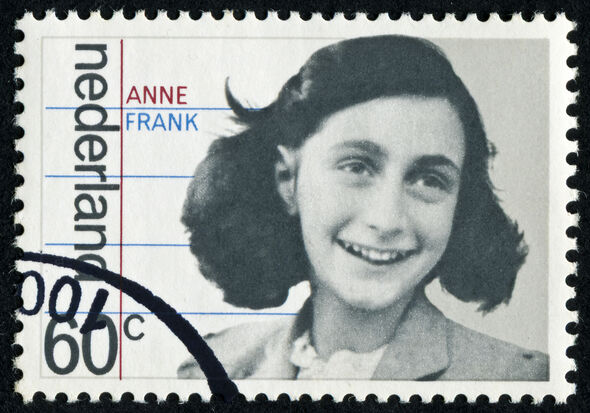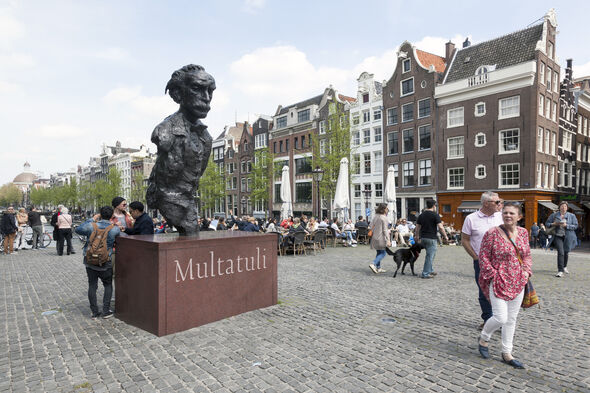New in the Netherlands: Dutch literature
Coming from another country to study in the Netherlands, you'll be confronted with so much that's new to you. Not only your degree program but also a totally different culture with its own language and customs. With this series of articles about things that are typically Dutch, we'd like to help you settle into life in the Netherlands. This time we’ll share with you a number of famous Dutch books that will acquaint you with Dutch culture and history.
Anne Frank: Het Achterhuis (The Diary of a Young Girl)
If you haven’t read the most famous literary diary of all time, we suggest you do so asap. Jewish girl Anne Frank wrote the diary as a testimony to the suffering she and her family had to go through while hiding in a building in Amsterdam during World War Two. In March of 1945, just a few months before the Netherlands was liberated, Anne died in Bergen-Belsen concentration camp at age fifteen. Her father Otto Frank, the only one in the family to survive the holocaust, ensured the diary was published in 1947. Since then, it was translated into around seventy languages and it has remained one of the most widely read books in the world to this day.
Multatuli: Max Havelaar, of de koffieveilingen van de Nederlandse handelmaatschappij (Max Havelaar: Or the Coffee Auctions of the Dutch Trading Company)
This book from 1859 is seen as one of the most important works in the entirety of Dutch literature. It tells the story of a man who exposes the transgressions in the Dutch Indies, the former colony of the Netherlands covering the territory that is now Indonesia. The local tax system, introduced by the Dutch government at the time, led to severe exploitation of the native people. Besides its literary merits, the book is an important instrument to shed critical light on the colonial past of the Netherlands.
Willem Frederik Hermans: De donkere kamer van Damokles (The Darkroom of Damocles)
Along with Gerard Reve and Harry Mulisch, Willem Frederik Herman is considered as a member of the ‘Great Three’, i.e. the three heroes of postwar Dutch literature. The Darkroom of Damocles is one of his signature works. The book is set in World War Two and revolves around a young shopkeeper named Henri, who meets resistance fighter Dorbeck during World War Two and ends up taking part in all kinds of resistance activities. When he’s accused of collaborating with the enemy after the liberation and repeatedly fails to prove his innocence, the reader starts questioning if Dorbeck is real or just a figment of Henri’s imagination. A question that Hermans does not provide a definitive answer to in this phenomenal book.
Gerard Reve: De avonden (The Evenings)
The Evenings, or ‘Een winterverhaal’ (A Winter’s Tale), is about grammar school dropout Frits who’s extremely annoyed with his parents, who he lives with, and his continuous failure to make anything of his life. The typical storytelling style is characterized by repetition and the absence of any exciting developments, because the book is essentially about loneliness, boredom and the meaningless of life.
Harry Mulisch: De aanslag (The Assault)
This book by Mulisch is set in Haarlem in 1945. A police inspector that collaborates with the enemy is shot to death in a street with four houses. The inhabitants will quickly have to decide what to do and the consequences of their actions will haunt them for the rest of their lives.
Annie M. G. Schmidt: Jip en Janneke (Jip and Janneke)
Anyone who grew up in the Netherlands, grew up with Jip and Janneke. The little books with stories about Jip and Janneke were authored by the most popular Dutch children’s writer Annie M.G. Schmidt. The very first story, in which a small boy named Jip befriends his neighbor Janneke, was published in 1952. Now, more than seventy years later, the stories about their friendship and small adventures of everyday life are more popular than ever. The iconic illustrations by Fiep Westendorp also contributed to the immortality of the duo. What’s more, the booklets enriched the Dutch language with a new word: ‘jip-en-janneketaal’. It refers to the clear language you use when you try to explain something in a simple fashion so everyone will understand. The simple language and short sentences make the books very suitable for people who want to learn the foundations of the Dutch language.
Hella Haasse: Oeroeg (The Black Lake)
“Oeroeg was mijn vriend” is one of the most famous first sentences in Dutch literature. The book is on the friendship between a Dutch boy and an Indonesian boy in the pre-Second World War Dutch Indies. Their different origins make for a complex relationship between the native boy and the son of a Dutch administrator, and the gap that starts forming between them turns out to be too wide to bridge.
Jan Wolkers: Turks fruit (Turkish Delight)
Turkish Delight is an iconic Dutch book from the late sixties, written by successful author, sculptor and painter Jan Wolkers. The main character, who’s also the narrator, meets love of his life Olga but – spoiler alert – their happiness is short-lived. The story deals with major life themes such as love, freedom, and resisting society’s narrowmindedness, but also with decline and death. The book was adapted for the big screen by Dutch director Paul Verhoeven, who went on to gain worldwide acclaim with movies such as films Basic Instinct and Total Recall.
Roxane van Iperen: ‘t Hooge Nest (The Sisters of Auschwitz)
While renovating her house, journalist and writer Roxane van Iperen discovered that Jews had gone into hiding there in World War Two. She’d never had such an easy time deciding what her next book would be about. The Sisters of Auschwitz tells the breathtaking story, based on real events, of two sisters who play an active part in wartime resistance and turn a villa in the Gooi region into one of the major hiding places in all of the Netherlands.




Discussion